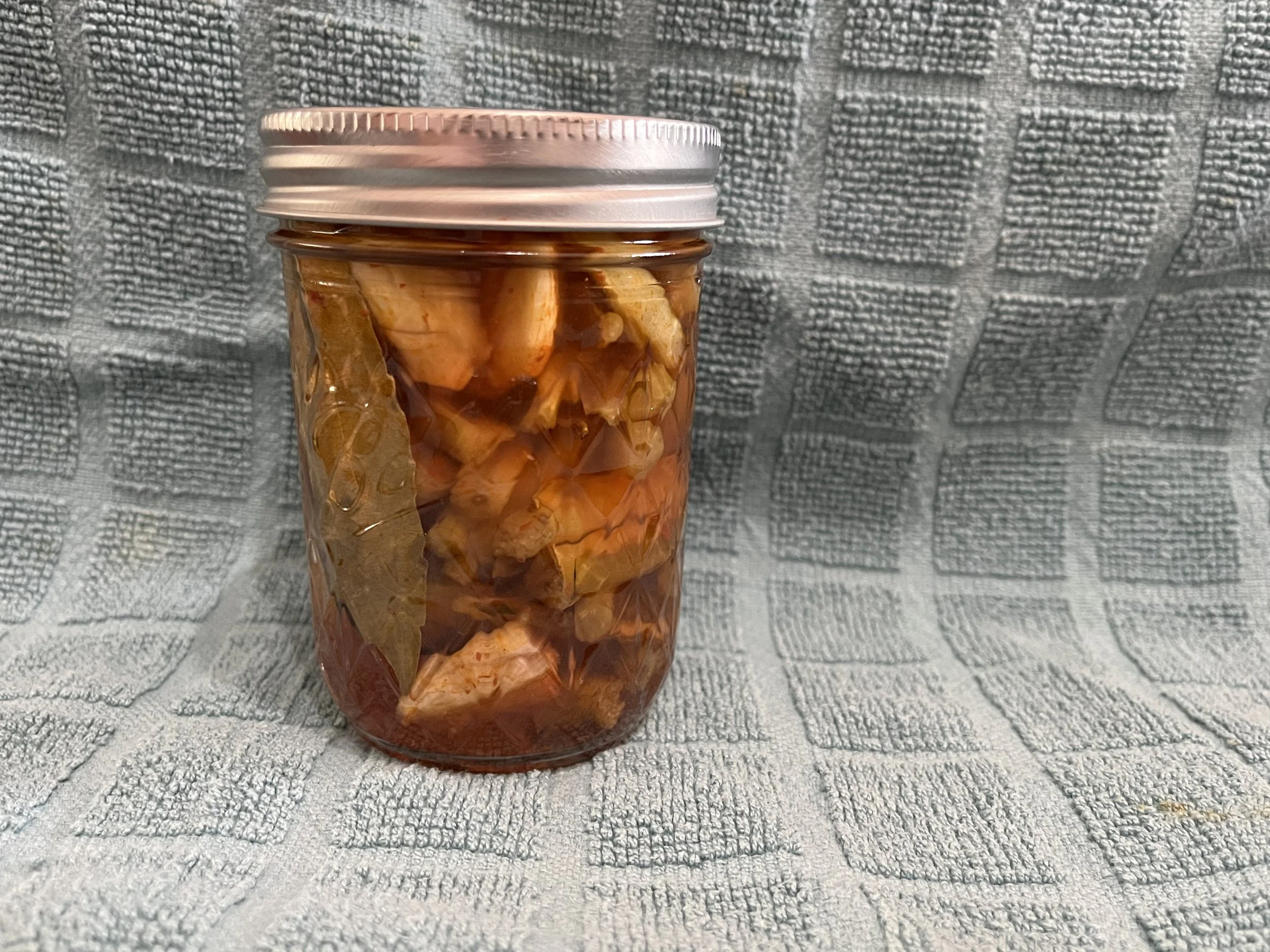Pickled Collard Stems
I love collards. There’s a 95% chance collards are my favorite of all smothered greens. However, the stems are unruly tough guys and wound up in my compost pile until …
Deep Run Roots by Vivian Howard entered my life and I found a recipe for pickled collard stems. They’re crunchy, acidic, and spicey, and I love them. Eat them as is, on the side of a rich meal, or in a sandwich. You really can’t go wrong.
If you’re afraid of canning, fear not. These delightful little pickles enter the fridge shortly after you make them. They’re good for about a month. They’ll taste good after that, but will lose their structure.
This is Viv’s recipe – I made the tiniest of adjustments.
Pickled Collard Stems Ingredients
4 garlic cloves
½ c cider vinegar
½ c of water
2 tsp granulated sugar
4 bay leaves
1 tsp Aleppo peppers
¼ tsp salt
1 cup of collard stems (roughly stems from 1 lb of leaves)
Pickled Collard Stems Directions
Slice of the dry end off of the garlic cloves. Lay the knife flat over the clove and give the knife a good whack with the side of your fist. The skin should pop off (or loose around it) and the clove should be smashed.
Combine ½ c cider vinegar, ½ c water, 2 tsp granulated sugar, 4 bay leaves, 4 smashed garlic cloves, 1 tsp Aleppo peppers, ¼ tsp salt in a small sauce pan. Turn the heat on high until it boils.
If the leaves are still attached to the collard stems, run a knife along the seam between the leaf and stem. Cut the stem across the equator in ½” pieces. You could go longer if you like. Once the stem gets too thin (soft/flimsy), discard it.
Remove the pot from the heat once the liquid boils, Add the stems to the pot for 2 minutes. Fill a large bowl about ½ way with ice and water. Add the pot of stems to the ice bath. Stir it until the pickles cool.
Pour the pickles and juice into a jar. The jars do not need to be the canning kind or sterile. Make sure the liquid completely covers the stems.
You can eat them immediately, but best to wait a day.
Notes
You can also use the hard stems of kale.
Use any vinegar you have. The last time I made it, I used red wine vinegar. Use distilled white vinegar as your last option. Although it is still good, it adds the least amount of flavor.

